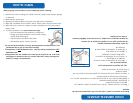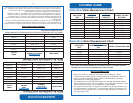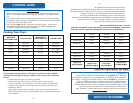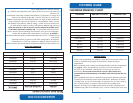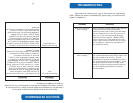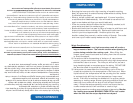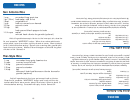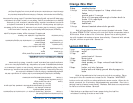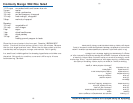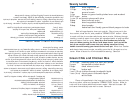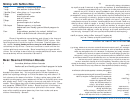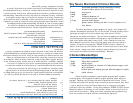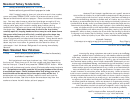
Safety Considerations:
1) Rice cookers cook at very high temperatures and will produce
large amounts of steam. Use extreme caution when opening rice
cooker during and after the cooking cycle. When lifting the
hinged cover, keep hands and face away from the rice cooker
to avoid the steam.
2) If a recipe calls for the sauteing of butter or oil, use extreme
caution, as you would when cooking with other high-temperature
devices like a stove or oven. The inner pot will be hot, so use a
long-handled plastic or wooden spoon for stirring. DO NOT USE
the short-handled rice paddle for this type of cooking.
3) It is important to remember that the cooking cycle of the rice
cooker is controlled by the temperature of the inner pot. When
liquid boils off, the temperature will rise, causing the rice cooker
to automatically shift into the low temperature ‘keep warm’
mode. This is fine for making rice dishes but if a recipe calls for
steaming or making soups, where copious quantities of liquid are
used, the rice cooker will not shut off until all liquid is boiled
away. Follow the recipes carefully and do not leave the rice
cooker unattended as it will continue to cook at high
temperatures when making soups, stews and steaming. Monitor
the cooking process and MANUALLY TURN OFF the rice cooker
when the time that the recipe stipulates has elapsed.
• Spraying the inner pot with a light coating of nonstick cooking
spray is a great way to make cleanup easier without adding flavor
or calories to your meal.
• When a recipe calls for salt, use kosher salt. It has no impurities
or additives and dissolves easily. You will need to use about half
again more kosher salt than you would table salt.
• If the rice cooker shuts off before the food is totally cooked, add
more water and start the cooker again.
• Stocks and broths can be used in place of water to add flavor and
improve texture when cooking rice. Stocks and broths can be
found in your local supermarket. Another option is to use
bouillon cubes (they come in a wide variety of flavors). One cube
and one cup of water usually makes one cup of stock.
HELPFUL HINTS
Consideraciones de seguridad:
1) Las arroceras cocinan a temperaturas muy altas y producirán grandes
cantidades de vapor. Tenga extrema precaución cuando abra la arrocera
durante y después del ciclo de cocinado. Cuando levante la cubierta
con bisagras, conserve las manos y la cara lejos de la arrocera para evitar
el vapor.
2) Si una receta necesita ser salteada con mantequilla o aceite, tenga
extrema precaución, al igual que cuando cocina con otros dispositivos de
alta temperatura, como la estufa o el horno. La olla interior estará caliente,
así que utilice un cucharón largo de plástico o madera para remover. NO
USE la pala para arroz corta para este tipo de cocinado.
3) Es importante recordar que el ciclo de cocinado de la arrocera es
controlado por la temperatura de la olla interior. Cuando el líquido hierve,
la temperatura sube, causando que la arrocera cambie
automáticamente al modo de “conservar caliente”, cuya temperatura es
menor. Esto está bien cuando se hacen platillos de arroz, pero si una
receta necesita vapor o hacer sopas, conde se utilizan grandes
cantidades de líquido, la arrocera no se apagará hasta que se haya
evaporado todo el líquido. Siga las recetas cuidadosamente y no deje la
arrocera sin supervisión, ya que continuará cocinando a temperaturas
altas cuando se cocinen sopas, estofados y alimentos al vapor
Monitoree el proceso de cocinado y APAGUE MANUALMENTE la arrocera
cuando haya transcurrido el tiempo especificado para esa receta.
• Rociar la olla interior con una capa ligera de spray para cocinar
antiadherente es una grandiosa forma de hacer la limpieza más
fácil sin agregar sabor o calorías a sus alimentos.
• Cuando una receta lleva sal, use sal kosher. No tiene impurezas ni
aditivos y se disuelve fácilmente. Usted necesitará usar media
porción de sal kosher más de la sal de mesa normal que utilizaría.
• Si la arrocera se apaga antes de que los alimentos estén
completamente cocinados, agregue más agua y vuelva a iniciar
la arrocera.
• Los caldos y consomés se pueden usar en lugar de agua para dar
sabor y mejorar la textura cuando cocine arroz. Puede encontrar
caldos y consomés en su supermercado local. Otra opción es usar
cubos de consomé (vienen en una gran variedad de sabores). Un
cubo y una taza de agua hacen generalmente una taza de
consomé.
CONSEJOS ÚTILES
15
15




